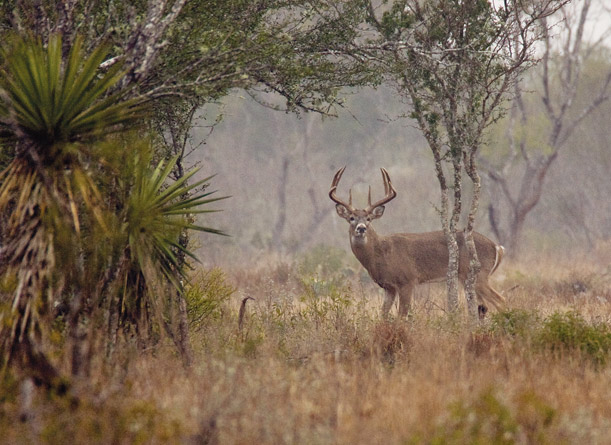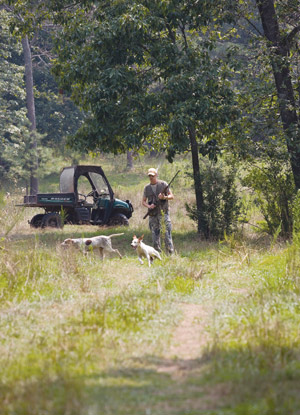What is my property worth? Who might buy it? Is there anything I can do to improve its value, while continuing to operate the property? Will improvements add as much to the value as they cost to complete?

Photo by Steve Bentsen
These are questions often posed to real property professionals by landowners, as they observe changes in market factors and demands — changes that ultimately may affect their net worth and, in many cases, the major asset in their investment portfolio.
When an appraiser does the job correctly, he or she accurately reads the market. In other words, the appraiser determines the factors of value that are most important in the environment in which the value is requested. These factors have never been more varied than they are today, as rural America moves from a production-oriented market to one that is driven by factors other than the productivity of the soil.
Two stories come to mind that emphasize this change.
The first dates back 40 years ago, to the time when my father asked an old horse trader what price a good horse would bring. The horse trader’s answer spoke volumes with respect to the current market for rural property: "Oh, Carlton, pretty sells more horses than good does," he said.
The second story dates to about 15 years ago, when I was training a young appraiser. Looking at a piece of rugged ranchland, he commented that he couldn’t believe that such rough, sorry (from a productive standpoint) hunting land would sell for more money than good, open, productive property.

Photo by Jim Lincoln
Little did either of these folks know how prophetic their statements would prove as the market evolves in the changing face of American agriculture.
To read today’s market for rural property, let’s back up and look at the big picture.
Who Are the Buyers, and What Motivates Them?
Back in the 1970s, Dr. Ivan Schmedemann, now retired professor emeritus at Texas A&M University, identified three markets for rural property — production, consumption and investment. Those three markets are still the norm today, and most buyers fit into the latter two.
Today’s buyer is looking for rural property that offers a reasonable return (investment) and which he or she can enjoy while owning it (consumption). Many current rural landowners do not run livestock or rent out cultivated land for production, but hold the properties for outdoor recreation.
Hunting and the enjoyment of wildlife are important aspects of rural recreation. For many people, harvesting a "trophy" is a bonus to the social outdoor experience. As a result, deer, bird and small-game hunting are big business, and ecotourism is a growing segment of the market, as well.
The current rural real estate market is driven by this anticipation of enjoyment, combined with the fact that the market for rural properties has been strong for a number of years and the investment value has been good.
Well-developed and well-managed recreational properties that offer documented results command premiums over properties in their native state. That is why in recent years we have seen an increase in cedar- and brush-clearing and deer-proof fencing, as well as development of wetland areas and native pasture for bird habitat.
Don’t Judge a Property by Its Fence
As with all factors of economic production, excess profits tend to breed ruinous competition. A number of years ago, in the Texas Hill Country, sales of well-managed, game-fenced properties tended to sell for twice the price of unmanaged, low-fenced properties. Since then, it seems, the whole world has gone to deer-proof fencing. However, many landowners do not know what the management of a game-fenced property entails, and unless a property is well managed, its value will not be as great as it could be. With the increase in the number of game-proofed ranches, the differential in value between fenced and unfenced properties has dropped, but demand still outpaces the supply of this type of property.
Look at the cultivated, more productive areas of the nation, and you will see that, even with historically high commodity prices, savvy landowners are taking out drainage tiles and converting cultivated land to duck habitat on low-producing spots. In many instances in the Mississippi River bottom, for example, recreational properties now command the premium once reserved for the most productive farmland. This is not to say that an owner should convert an entire property to a swamp for duck habitat, but if there is a wet corner that could easily attract more birds, it would be a good option to enhance the value of a property.
Today, in areas of New Mexico where good elk habitat exists, the market for rural properties is driven by the number of bull elk permits allotted — not by acreage or by how many head of livestock a property will support. Dove, quail and turkey hunting also are popular; in fact, some outfitters run buses from metropolitan areas to active dove areas for weekend-package outings. The prime cultivated areas used for these hunting excursions are planted to "crops" that attract birds, because returns are greater from the recreational use than from the historic agricultural production on the property.
How Long Will Current Market Conditions Last?
The recreational and investment aspects of rural property ownership have continued to gain in importance over the last three decades. Since about 1990, they have been the dominant factors in the nation’s rural real estate market as the result of people looking to get out of the city for a period of time to recharge from their hectic lifestyles. With more and more Americans living and working in metropolitan areas, I see no evidence of a slowdown in the importance of recreation and investment as motivating factors for buying rural property.
Another question a knowledgeable rural property–owner might ask is, "What happens to these properties when the general market experiences a decline?" I am one of the dinosaurs who lived through the crash of the 1980s, when some large landowners experienced financial difficulties that were unimaginable just a few years earlier. Significantly, however, properties that had good reputations for providing a quality outdoor experience declined less in value than those that had no enhancement from a non-agricultural user’s standpoint. Again, these improved properties had something that set them apart, or made them better in the minds of rural land–buyers, than competing rural properties that had not been developed for alternative uses.
These considerations and market observations contribute to the desire to own rural property today. What other investment provides the opportunity for personal use and enjoyment, relative security of investment, and the opportunity for improvement in order to maximize returns when it is sold? The enjoyment and satisfaction of improving the right rural property will pay big dividends when those efforts are correctly employed.
Observations on the Rural Real Estate Market
• Recreation and investment motivate today’s rural land–buyers.
• Recreation, not production, generally drives land values.
• Well-managed recreational properties command premium prices.
• The differential between game-fenced and unfenced property is dropping.
• Improving wildlife habitat can increase property value.
• Improved properties maintain their value better in hard times than unimproved properties.
Property Improvements That Can Pay Off
Usually, one of the first actions by a new landowner is to figure out how to increase the potential for wildlife opportunities on their property. Thus, it makes sense for a seller to attempt to package a property appropriately for the market.
Water Development
It is my observation that the highest return for each dollar spent can be realized by the development of additional water. In the drier, western areas, this enhances wildlife habitat and creates additional land–use opportunities, besides agricultural production. In the wetter, eastern areas, methods of water improvement can broaden the land-use opportunities and may bring a total different group of buyers into the bidding for a property.
Habitat Management
Habitat management runs a close second to water development. Heavily wooded or brushy properties once commanded a premium over more open properties. Today, the market still demands adequate cover for wildlife, but buyers are aware that food for wildlife will not grow on property choked off from sunlight hitting the soil. Without adequate food sources, you can’t optimize wildlife numbers. Therefore, buyers of rural recreational land are willing to pay for properties that have food plots and enhanced food production for specific wildlife species.
Other Improvements
Beyond the "big two" cited above, game-proof fencing, introduction of improved genetics and enhanced feeding also can contribute more to a property than they cost. However, they also require increased management capability in order to maximize return on investment.
Paul Bierschwale, ARA, a rural appraiser since 1976, opened Bierschwale Appraisals in 1980 and organized Bierschwale Land Company, a Junction, Texas, brokerage firm, in 2006. His appraisal experience includes ranch, farm, commercial, industrial and residential properties in Texas, Louisiana, Missouri, Oklahoma, New Mexico, Arizona and New York. He is a past president of the American Society of Farm Managers and Rural Appraisers, and has taught appraisal to students in over 40 states. E-mail him at pbier@ctesc.net.
-Paul Bierschwale